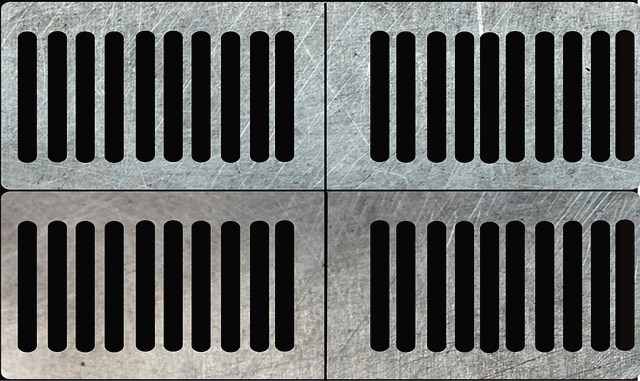Sewer line replacement is crucial for maintaining infrastructure, addressing aging pipes that cause blockages, leaks, and environmental damage, exacerbated by growing populations. Regular inspections reveal problems early, enabling cost-effective repairs. Using modern materials enhances the longevity of new sewer lines and reduces future maintenance needs. Homeowners should watch for signs like unusual odours or slow drains, indicating potential issues with their sewer lines. Sewer line replacement involves meticulous planning, advanced technology, and strategic material selection, such as HDPE and PVC, to minimize disruption and ensure better long-term performance. Effective logistical planning and regular maintenance are vital for extending the lifespan of successful replacements.
“In every home and establishment, an often-overlooked yet critical component of our plumbing system is the sewer line—a vital link between our buildings and the broader waste management network. Understanding Sewer Line Replacement is essential for maintaining a functional and hygienic environment. This comprehensive guide delves into the necessity of replacement, signs requiring action, step-by-step installation processes, material selection, common challenges, and maintenance tips. By exploring these aspects, homeowners and professionals alike can ensure efficient and durable sewer line replacement.”
Understanding Sewer Line Replacement: Why It's Necessary

Sewer line replacement is a critical aspect of maintaining and upgrading an area’s infrastructure. Old or damaged sewer lines can lead to a range of issues, from blockages and leaks to more severe environmental concerns. As such, timely replacement is essential for ensuring the smooth functioning of both residential and commercial properties.
The necessity arises from several factors: the aging infrastructure, material deterioration due to corrosion or tree root intrusion, and the increasing demands on sewer systems with growing populations. Regular inspection and maintenance can identify potential issues early on, allowing for cost-effective repairs rather than major disasters. Efficient replacement processes use modern materials designed to withstand harsh conditions, enhancing the longevity of the new lines while reducing future maintenance needs.
Identifying Signs That Indicate a Need for Sewer Line Replacement

Many homeowners often overlook the importance of their sewer line until an issue arises. Regularly checking for signs of potential problems is key to maintaining a healthy plumbing system. One of the first indicators that your sewer line might need replacement is unusual odours or gasses coming from drains. This could be an early warning sign of a crack or break in the pipe, allowing unwanted gases and sewage odours to escape.
Another telltale sign is slow-moving or blocked drains. If you notice that water isn’t draining as quickly as usual or if it appears to pool in your sinks or showers, there might be an issue with the sewer line. Tree roots are a common cause of clogs and damage, so look out for any signs of root intrusion, such as frequent clogs or visible roots around pipes. Regular maintenance and prompt action when identifying these issues can prevent more serious and costly sewer line problems in the future.
The Process of Sewer Line Installation: Step-by-Step Guide

Sewer Line Installation involves a meticulous process, ensuring efficient drainage and sanitation systems. Here’s a step-by-step guide to understanding this critical procedure:
1. Assessment and Planning: Begin by inspecting the existing sewer line for damage or blockages. This stage involves using advanced camera technology to map out the pipeline’s condition. Once identified, a strategy is formulated, considering factors like ground conditions, building obstructions, and material requirements for replacement.
2. Excavation: The selected route for the new sewer line is carefully dug, ensuring minimal disruption to surrounding structures and landscapes. Excavators precisely remove soil and debris while maintaining proper depth and alignment, per industry standards. This step requires careful navigation around underground utilities, such as water pipes and electrical cables, to avoid damage.
3. Installation of New Sewer Line: After excavation, the new sewer pipe is carefully placed, ensuring a secure fit with minimal gaps. The pipe is typically made from durable materials like PVC or concrete, chosen for their longevity and resistance to corrosion. It is then sealed at joints using specialized seals or couplings to maintain water tightness.
4. Testing and Inspection: Once installed, the sewer line undergoes rigorous testing. This includes water pressure tests to ensure the system’s integrity and identify any potential leaks. Video inspection cameras are deployed to verify the pipeline’s condition, confirming the successful replacement of the old sewer line.
Choosing the Right Materials for Longevity and Efficiency

When it comes to professional sewer line installation, choosing the right materials is paramount for both longevity and efficiency. High-quality pipes made from durable materials like PVC or concrete are essential to withstand the constant pressure and flow of waste. These materials offer excellent resistance against corrosion and damage, ensuring your sewer lines remain functional for years to come.
Additionally, incorporating advanced technologies such as high-density polyethylene (HDPE) can enhance performance further. HDPE pipes are known for their flexibility, strength, and ability to conform to complex landscapes without compromising integrity. This not only facilitates easier installation but also promotes reduced maintenance costs over time, making it a smart choice for effective sewer line replacement.
Techniques for Successful Sewer Line Replacement

When it comes to professional sewer line installation, successful replacement involves a combination of advanced techniques and meticulous planning. One key approach is utilizing innovative materials designed for longevity and durability. Modern pipes are made from high-density polyethylene (HDPE) and polyvinyl chloride (PVC), which offer exceptional resistance against corrosion, cracking, and root intrusion. These materials also provide excellent flexibility, allowing for easier installation around curves and tight spaces without compromising structural integrity.
Another crucial technique is the use of trenchless technology, such as relining and pipe bursting. Trenchless methods significantly reduce excavation, minimizing disruption to surrounding properties and infrastructure. Relining involves inserting a new pipe inside the existing one, while pipe bursting uses specialized equipment to fracture and remove old pipes, creating space for new ones. These techniques not only expedite the replacement process but also ensure better long-term performance of the sewer lines due to reduced installation stress on the new pipes.
Common Challenges in Sewer Line Installation and How to Overcome Them

Sewer line installation, while a crucial infrastructure project, comes with its fair share of challenges. One of the primary hurdles is navigating existing landscapes, especially in urban areas where space is limited and underground utilities are densely packed. Professional contractors employ advanced locating technologies to accurately map out the best routes, minimizing damage to surrounding structures and services.
Another common challenge is managing the materials and equipment required for sewer line replacement. Heavy machinery, large pipes, and specialized tools demand careful coordination and logistical planning. Skilled teams utilize innovative techniques, such as relining methods that reduce excavation, to streamline the process. This not only cuts down on project timelines but also minimizes disruptions to local residents and businesses, ensuring smoother operations and less interference with daily life.
Maintenance Tips to Extend the Lifespan of Your Replaced Sewer Line

After a successful sewer line replacement, proper maintenance is key to extending the lifespan of your new installation. Regular inspection is the first step; check for any signs of damage, leaks, or clogs. Addressing issues early can prevent more severe problems down the line.
Consider implementing preventive measures like avoiding tree root intrusion by installing protective barriers and scheduling professional cleaning and inspections annually. Maintaining proper water flow and pressure, as well as using sewer-safe products, will contribute to the long-term health of your sewer line replacement, ensuring optimal performance and reducing future repair needs.
